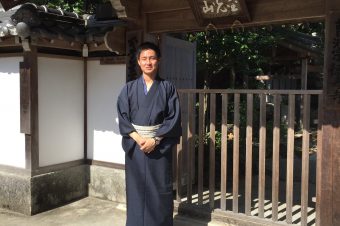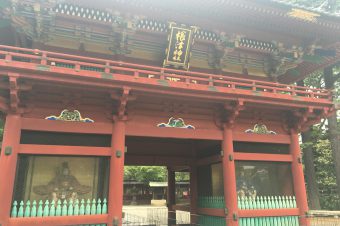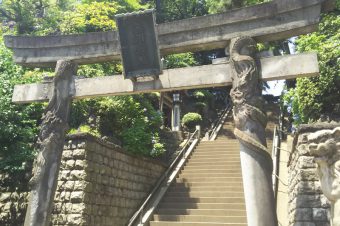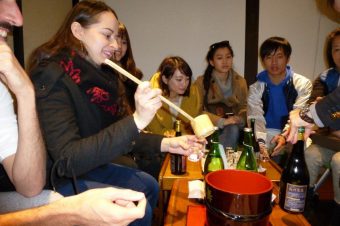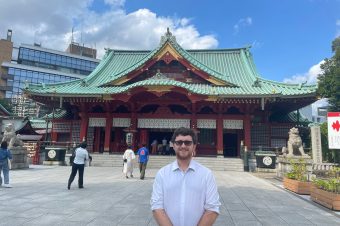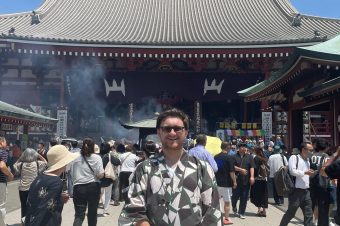Have you ever heard the Japanese word “Hatsumode”? Visiting to shrines and temples at the beginning of the year is called “Hatsumotode” and it is a traditional part of Japanese culture. Japanese have tutelary god in their communities at the beginning of the year to thank the god for divine protection and to celebrate the New Year. At that time, many people buy amulets and “hamaya” with looks like arrows for protecting you from bad evil and draw a fortune slip called Omikuji in order to know fortune of the year. Also, the temple or Shrine will burn the amulets and so on which you bought last year.
However, as the rural population migrated to the metropolitan areas, a large number of people lost their original tutelary god, and now visit famous shrines and temples as an alternative to visiting their original tutelary god, thus maintaining their Japanese traditional in a new way.
Today we will introduce to you the most visited places during the first three days of January on 2006 in Japan. This ranking was published in 2009 by the Japanese police department. The data published in 2005 was the most accurate, because later ranking had different ways of counting, so after 2009 the police department stopped publishing rankings.
1 Meiji Shrine
The Meiji Shrine is every year the most visited place at the beginning of year and not overstatement the represents shrine in the Japanese country. The shrine was established in order to enshrine both the Meiji Emperor and the Empress Dowager Shoken, the wife of Emperor Meiji. The number of people visiting the Meiji Shrine in the first 3 days of New Year is more than 3 million people and so the number one in the ranking. The Shrine is famous for world peace, safety of one’s family, marriage ties, warding off evil, traffic safety and Success of getting Good job. The Meiji Shrine is also like an oasis in a busy city in Tokyo with more than 100 thousand donated trees from the publics.
Number of people visiting: around 3, 17 million people
Access: JR Yamanote Line Harajuku Staion / Tokyo Metro Line Meiji Jingumae station
2 Naritasan Shinsho Temple
The Naritasan Shinshoji Tempel is the grand head temple of the Chisan sect of the Shingon school of Buddhism. The two-storied pagoda with 6 meter lengths, a manifestation of the Acala (he is a protective deity particularly in Shingon traditions of Japan where he is known as Fudo Myo-o), is very impressive. If you take the time and slowly look at all temple buildings it can take you a whole day to complete. It is very popular to put Goshuin on your forehead. The Goshguin is considered as a manifestation of a deity of or Buddha. It is said that being put it on your forehead, make your academic success come true so it is famous among the students. The location is neighberhood of the Narita Airport, so there are also many foreign visitors. In the year 940, this temple was found by a monk named Kanchou Sojo who is a member of the Shingon school of Buddhism and this temple enshrined the Acala.
Number of people visiting: 2. 75 million
Access: Takes 10mins, Walk from the JR Narita line on “Narita station”
3 Kawasaki Daishi Heigenji Temple
This temple is well known as a shrine which hold a ritual of purification ceremony in order to ward off something bad evils. In Japan, It is widely believed that the moment of reach the particular ages, we experience something unfortunate. In order not to experience, we’ll take a purification ceremony.
On the 1128, Buddhist priest Sonken and Kanenori began constructing a temple, which was the origin of the present day of Kawasaki Daishi Heikenji Temple, Grand Head Temple of the Chisan Sect of the Shingon Buddhism. It is the center of worship for devoted followers and spreading the teachings of Kobo Daishi.
Number of people visiting: around 2, 72 million people
Access: From Haneda Airport International Terminal Station,
Shinagawa Station or Yokohama station
Take the Keikyu Line to Keikyu Kawasaki Station.
Transfer to the Keikyu Daishi Line to Kawasaki-daishi Station. It takes 8 mins walking from the station..
4 Fushimi Inari Shrine
It is said that there are more over 30,000 Inari Shrine in Japan and it is familiar with every people including men and ladies, young and old. Fushimi Inari Shrine is the head of Inari Shrine. From the ancient time, it has been believed that if you pray to the deiry, your wish of cultivation and business might come true. The atmosphere of this shrine is definitely amazing and it let us feel the historical atmosphere. Also the shrine buildings is painted with beautiful vermilion and the Romon (two-stored gate), Honden (main building) are designated as important properties. There are thousand 1000 Torii gate called “Senbon Torii”. It is not overstatement that the Senbon Torii is represent of this shrine. It is rather popular for foreigners and as a sightseeing spot.
Number of people visiting: 2. 69 million people
Access: 2 mins walking from The JR Nara line on「Inari」station
5 Atsuta Jingu Shrine
Since enshrined sacred sword Kusanagi-no-Tsurugi, which is one of the three sacred treasures that symbolize the Imperial throne, as a Goshintai (physical objects that hold the spirit of a deity), it passed 1900 years on the year of 2013. The ground of this shrine is huge and there are a lot of Setssha and Massha, which are collective name of shrines and are not exactly deferent but both of them are and controlled and entrusted to the care of a larger shrine. Also there are Shinto rituals and festival over 70 in a year. A lot of people visit and worship this shrine during end of year 31th December to Ney year January 1th in order to celebrate New Year and enjoy Japanese Shinto rituals and festivals which are held at that time. Number of people visiting: 2. 32 million
Access: Three minutes walking from Jingumae Station
Eight minutes walking from Atsuta Station
Seven minutes walking from Jingu-Nishi Station
6 Sumiyoshi Taisha Shrine
This shrine is head of Sumiyoshi shrine which are over 2000 shrines all over the nation. A kami which is enshrined at this shrine is Sumiyoshi Sanjin and he is a deity of Misogi, which means that Shinto priests and faithful commoners enter a river or the sea to purify themselves with water. To wash your hand and mouth at shrine is the simplest Misogi to purify your body. The Honden (main building of shrine) was built on 1810 and designated as a national treasure recently.
Number of people visiting: 2. 26 million
Access: 3 mins waling from Sumiyoshi Station
7 Sensoji Temple
There are a lot of stalls on the street at Sensoji Temple. The Hondo (main hall of a temple and enshrines the most important objects of veneration) and the others building are destroyed by the World War II. All the building now you can see were re-built after the world war. The Big lantern named “Kaminarimon(雷門)” is really famous for foreigners. It was donated by Konosuke Matsushita, who is foundation of Matsushita Electric Industrial Co., Ltd. (the former name of “Panasonic Corporation”.) At the midnight of end of year, this temple ring a bell 108 times. Most Buddhist temples start ringing their bells 108 times late on New Year’s Eve and continue into the early hours of New Year’s Day. Most people think that the 108 tolls of the bell symbolize the casting away of 108 earthly desires, bonnou, which are believed to cause human suffering. There are desires such as sexual appetite, materialistic desires and so on.
Number of people visiting: 2. 20 million
Access: 5 mins waling from the Asakusa station on the subway
8 Tsurugaoka Hachimangu Shrine
This shrine is located at Kamakura in Kanagawa prefecture. The city is widely known the historical city where has a lot of temples and shrines which have deep history. That’s why a lot of people visit this city at the time of Hatsumode Especially, Tsurugaoka Hachimangu Shrine is really popular for worshipper. From the January 1th to 7th, there is a ritual to put Goshuin, which are considered as a manifestation of a deity of or Buddha, on your forehead. If you receive it on your forehead, it is said that it protect your body and keep your body health. It is really popular for worshipper.
Number of people visiting: 2. 13 million
Access: 10 mins walking from the JR Kamakura Station
9 Dazaifu Tenmangu Shrine
This shrine is considered as head shrine of Tenmangu Shrine which enshrine academic god Sugawara no Michizane. The palm tree in front of Honden (main building of shrine) called “Tobi Ume” start to open up at the beginning of January. The reason that the palm tree is called Tobiune is in the legend, when Sugawara no Michizane left Kyoto because of being exile to Fukuoka, this particular tree yearn so much for him that, uprooting himself, it flew to reunite with him in Dazaihu. On January 7th, one of the Shinto fire ritual is held and it is available to take part in for everyone. The ritual is called “Onisube” and held for wish of the year’s health and wealth.
Number of people visiting: 2. 04 million
Access: 5 mins walking from the Dazaifu Station
10 Musashi Ichinomiya Hikawa Shrine
This shrine is the head shrine of Hikawa Shrines which are over 280 and mainly the Kanto area. The ground of this shrine is incredible huge and the road to Honden (main building of shrine) is 2 kilometers long. There are cherry blossom and Japanese zelkova and so on, over 30 kinds of tree on the street. Some of trees are designated as important properties.
Number of people visiting: 1. 87 million
Access: 15 mins walking from the JR Omiya Station
